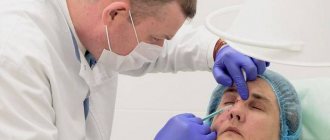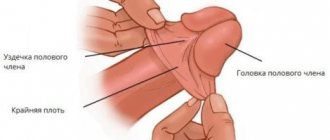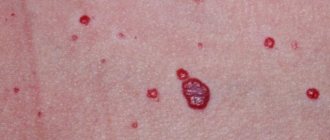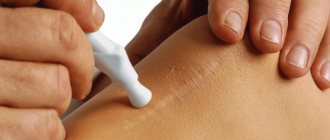Pigmented formations called birthmarks are present on the body of every person. In some cases, nevi are injured by the seams of clothing or attract the attention of others, causing psychological discomfort, so removal of moles is a fairly popular procedure. The consequences that it may lead to must be assessed in advance in order to minimize the risk to health.
Causes of moles
The number of birthmarks may increase throughout life. The occurrence of formations can be provoked by the following factors:
- Ultraviolet radiation. Exposure to direct sunlight for a long time can lead to the appearance of new areas of pigmentation, as well as the malignancy of existing moles.
- Hormonal imbalance that occurs even in healthy people during adolescence and pregnancy.
- Violation of the integrity of the epidermis.
- Penetration of infectious agents and viruses into the body.
- Genetic predisposition.
- Impaired functioning of the pancreas or thyroid gland, liver.
- Exposure to radiation.
- Avitaminosis.
Possibility of unforeseen consequences
Laser correction of moles is one of the safest ways to get rid of nevus, avoiding complications and unforeseen consequences. A beam of directed light radiation literally evaporates the pigmented cells of moles, which is visually manifested by the complete removal of the epidermal formation in just a few minutes. Minimization of negative consequences occurs due to the following objective factors.
- The laser beam acts in a strictly targeted and selective manner, without injuring healthy skin structures, which allows the technique to be used even to remove the smallest nevi in the eyelid area and mucous membranes;
- There is virtually no risk of infection, since the laser exhibits a powerful antibacterial and antimicrobial effect, protecting the wound surface from infection;
- Laser destruction is not accompanied by bleeding or hemorrhage, since during the manipulation process all blood capillaries supplying the body of the mole undergo thermal coagulation;
- The laser activates regenerative processes in the skin, which significantly accelerates wound healing;
- The technique is low-traumatic, which avoids the formation of connective tissue and all the negative consequences associated with this factor.
Despite the safety of the method, it should be borne in mind that before the procedure it is necessary to carefully study the list of contraindications, since the consequences and complications of laser correction most often result from neglect of this list, which includes the following conditions:
- Pregnancy;
- Acute infectious process;
- Oncology of any localization;
- Inflammation in the intended area of laser exposure;
- Period of menstruation in women;
- Immunodeficiency;
- Exacerbation of chronic pathologies;
- Hyperthermia.
Indications for surgery
Experts recommend closely monitoring birthmarks in order to promptly notice signs of their degeneration into malignant tumors. The need to remove formations is present if the following indications are present:
- Rapid growth of the spot, change in its color, appearance of prominent stripes or dots.
- Nodular or glossy surface of the nevus.
- The release of fluid from the mole, the formation of a weeping surface.
- Red outline around the spot.
- Loss of hairs that grew on the surface of the nevus or the formation of new hair follicles.
- Peeling and cracks.
- Soreness, burning sensation and itching.
- The pigmented area lacks clear boundaries.
- Injury to moles during the process of combing hair, performing hygiene procedures, wearing clothes and shoes.
- Large nevi located on open parts of the body and reducing the patient’s quality of life.
Removing birthmarks is associated with certain risks, so getting rid of formations without serious reasons is not recommended. Safe spots have a uniform color, a diameter of no more than 5-7 mm, and can be flat or slightly prominent above the surface of the skin. You can obtain accurate information about the type of nevus at a medical institution after diagnosis.
The following methods are used for research:
- Dermatoscopy is the study of pigmentation using a device equipped with a magnifying glass and a special scale for assessing changes.
- Biopsy - an incision is made using a scalpel and a small amount of tissue is removed for analysis. The procedure is performed under local anesthesia.
- Cytology is the study of biomaterial for the presence of cancer cells.
- X-ray, ultrasound to clarify the diagnosis.
Serious symptoms
In some cases, it is better not to think about whether it is possible to remove moles on the face, but to rush to the doctor and have them removed as quickly as possible. We are talking about the degeneration of a nevus.
Symptoms that characterize danger are:
- different color;
- increase in size of the mole;
- redness;
- falling hair growing from the roots of the mole;
- cracks are observed;
- the nevus itches or feels burning;
- fluid or blood is released from the mole.
If such manifestations occur, you should immediately seek help from a dermatologist-oncologist. If you feel discomfort in the area of the mole, and the doctor’s advice is removal, do not hesitate. Untimely removal of the nevus can lead to the development of melanoma.
It is very dangerous to self-medicate, use various ointments and folk remedies. This can lead to the development of a pathological process in tissues. It is also strictly forbidden to get rid of moles yourself. The consequence of such an act may be blood poisoning.
Stain removal methods
The likelihood of complications occurring after surgery depends not only on the competence of the specialist and the chosen method of getting rid of the defect, but also on the type of nevus, the characteristics of the patient’s body and his compliance with recommendations regarding skin care during the period of its recovery. Formations are removed using several methods:
- Exposure to laser beams. Suitable for getting rid of small nevi. If the spot is flat, it disappears almost without a trace. The consequences of laser removal of large moles are depressions or light scars. These areas do not tan and may stand out against the background of healthy skin. There are no complications after laser mole removal if the procedure is performed correctly.
- Cryodestruction. The disadvantage of this method is the inability to control the penetration depth of liquid nitrogen. If the individual cells that made up the nevus remain in the deep layers of the skin, the defect may re-form. After the epidermis has healed, a small bump may form on the treated area. It must be taken into account that a contraindication to cryodestruction is the presence of a cold allergy in the patient.
- Radio knife. Using an electric knife eliminates direct contact with the skin, so the patient does not experience pain and there is no burn left on the skin. There may be consequences in the form of reddish scars, so it is not recommended to use the radio wave method to treat the face.
- Electrocoagulation. Layer-by-layer burning of pigmented tissue with high-frequency current discharges. Exposure to high temperatures prevents blood loss and wound infection. Superficial moles can be removed without consequences, but if it is necessary to penetrate deep into the epidermis, there is a risk of the formation of a white spot.
- Surgical excision. This is a traditional method that involves cutting off the birthmark using a scalpel. The resulting wound is closed by suturing. After surgery, subcutaneous hemorrhage is possible, the signs of which persist for a week. Regeneration of the epidermis after surgical excision takes longer compared to other, more gentle methods of mole removal. A keloid scar may appear at the wound site if the patient has a predisposition to scar formation. A mole that is not completely cut off can grow back and also degenerate into a malignant tumor.
Contraindications for use
Laser coagulation has another advantage - a very short list of contraindications to the use of such therapy.
| Contraindication | Cause |
| Photodermosis | This is an allergy to sunlight, or more precisely to ultraviolet radiation. The use of a laser in this case can cause significant swelling and significant redness. In rare cases, blisters may appear on very sensitive skin. |
| Skin diseases | If the patient suffers from dermatological diseases, acne or herpes, a course of treatment is required before the laser removal procedure. For mild forms, only medication support is necessary. |
During the use of the laser technique for eliminating skin formations, no strong allergic reactions affecting the functioning of the cardiovascular system, immunity or other body systems were observed.
Photodermosis, a direct contraindication to laser use
The danger of self-removal of a nevus
If a person removes a mole on his own, the consequences can be severe. It is impossible to determine at home whether a particular formation is benign. To obtain accurate results, consultation with a specialist and testing are required.
Nevus cells are often located not only above the skin, but also in the deep layers of the epidermis. By removing the visible part of a mole, you may encounter a recurrence of the pathology, as well as the formation of melanoma, which is considered a type of cancer.
Even if there are indications, it is difficult to get rid of education correctly without having the appropriate skills. Unsuccessful cutting of a nevus can result in heavy bleeding, the formation of a noticeable scar, or infection of the wound.
Laser mole removal, reviews and consequences of the procedure in the photo
A mole is nothing more than a local accumulation of melanocyte cells, which is normally harmless. These formations can be flat, convex, of various sizes, colors and shapes, and hair can even grow from them. In the photo, the moles that need to be removed are most often those that threaten to degenerate into cancer.
Features of the regeneration process
Regardless of the method chosen to remove the nevus, a wound will form on the skin. Cell restoration occurs as follows:
- The damaged epidermis becomes covered with a crust, under which new tissue begins to form.
- After 1-2 weeks the crust disappears. The duration of regeneration depends on how deep the mole goes under the skin, as well as on the type of operation.
- In place of the crust you can see delicate pink skin. It should be protected from mechanical stress and sunlight.
- The redness subsides after 15-20 days and the shade of the epidermis becomes more natural.
- Discomfort in the area of the skin where the birthmark was located can be felt for about 5 weeks.
- The wound heals completely in 2-6 months. It may happen that a scar will remain in its place.
To prevent the development of complications, the wound must be cared for. To do this, you must adhere to the following recommendations:
- Treat the damaged area with any liquid with antiseptic properties, for example, brilliant green, hydrogen peroxide solution or chlorhexidine.
- During the first week after surgery, you should not go to the sauna, wash with hot water, or stay in the sun for a long time.
- It is not recommended to apply cosmetics to unhealed skin.
The resulting crust cannot be peeled off; you must wait until it falls off naturally. Damage to an unhealed wound can lead to infection, disruption of the regeneration process and an increased likelihood of scar formation.
The severity of the consequences of removing a mole on the face or body depends on the method of eliminating the formation and the size of the nevus. To minimize the risk of complications, it is necessary that the procedure be supervised by an experienced specialist.
More about the technique
Laser mole removal is based on the use of a specialized instrument that sends powerful light streams. These rays selectively destroy pigment cells and promote their evaporation. The photos before and after the procedure show how effective the procedure is.











